-
REVIEW01-01-2018
Nursing Interventions in the Enhanced Recovery After Surgery®: Scoping Review
Revista Brasileira de Enfermagem. 2018;71:2824-2832
Abstract
REVIEWNursing Interventions in the Enhanced Recovery After Surgery®: Scoping Review
Revista Brasileira de Enfermagem. 2018;71:2824-2832
DOI 10.1590/0034-7167-2018-0436
Views0See moreABSTRACT
Objective:
To identify the Nursing interventions, described in literature, in the ERAS® program.
Method:
We defined a scoping review based on the recommendations of The Institute Joanna Brigs (JBI) and on research in electronic databases. We chose the studies through flow diagrams “Preferred Reporting Items for Systematic Reviews and Meta-Analyses (PRISMA)” and presented them in a chart.
Results:
We found 306 articles published between 2010 and 2018 and included 14 of them. The main results were: the crucial role nurses play throughout the surgical process, which begins at the preoperative nursing consultation; goes to post-operative care, such as early giving food to patients, effective management of pain or early mobilization; and ends in telephone follow-up.
Conclusion:
The introduction of the surgical program ERAS® may be an opportunity for nurses to play a more influential role in the surgical path, directly involving with their clients’ results.

-
REVIEW01-01-2018
Quality of life in children with kidney transplant: Systematic review
Revista Brasileira de Enfermagem. 2018;71:2818-2823
Abstract
REVIEWQuality of life in children with kidney transplant: Systematic review
Revista Brasileira de Enfermagem. 2018;71:2818-2823
DOI 10.1590/0034-7167-2018-0464
Views0See moreABSTRACT
Objective:
To identify in the literature studies that evaluate the quality of life in pediatric patients with kidney transplant through use of specific, validated instruments in Pediatrics.
Method:
Systematic review of the literature with searches conducted in the following databases: Medline, PubMed, LILACS, CINAHL, SciELO and Cochrane Library. Main keywords: Quality of life, Kidney transplantation and Pediatrics.
Results:
A total of 366 studies were selected and eight observational studies were included that evaluated the quality of life of children with kidney transplant by means of evaluation instruments of quality of life.
Conclusion:
The quality of life of children with kidney transplant is inferior compared to healthy children. The post-transplant period presents better results compared to pre-transplant children. The identification of mental, physical and social conditions related to the quality of life of this population allows for better planning the assistance provided to them.

-
REVIEW01-01-2018
Nurses’ contributions to good practices in child care: an integrative literature review
Revista Brasileira de Enfermagem. 2018;71:2808-2817
Abstract
REVIEWNurses’ contributions to good practices in child care: an integrative literature review
Revista Brasileira de Enfermagem. 2018;71:2808-2817
DOI 10.1590/0034-7167-2018-0416
Views1See moreABSTRACT
Objective:
to identify scientific evidence on the contribution of nurses’ work to good practices in child care in the Brazilian literature.
Method:
integrative review of the literature, carried out in Latin American and Caribbean in Health Sciences Literature (LILACS), Medical Literature Analysis and Retrieval System Online (MEDLINE), Brazilian Nursing Database (BDENF), Cumulative Index to Nursing and Allied Health Literature (CINAHL) and Scientific Electronic Library Online (SCIELO) database, from 2008 to 2018.
Results:
14 complete studies were selected for interpretative analysis. Two categories allowed responding to the initial questioning of the study, namely: Nurses’ contributions in child care; and Limits for the nurse’s role in child care.
Conclusion:
evidences show the importance of nurses in child care for the promotion of comprehensive care for children and their families. However, there are socioeconomic, cultural, institutional and technical factors that hinder the nurses’ performance in this setting.

-
REVIEW01-01-2018
Nursing students’ perception about humanized care: an integrative review
Revista Brasileira de Enfermagem. 2018;71:2800-2807
Abstract
REVIEWNursing students’ perception about humanized care: an integrative review
Revista Brasileira de Enfermagem. 2018;71:2800-2807
DOI 10.1590/0034-7167-2017-0845
Views0See moreABSTRACT
Objective:
To analyze the productions of knowledge about the students’ perception of humanized care.
Method:
Study of bibliographical revision of the integrative type. The databases Pubmed, Lilacs, Cuiden and the SciELO virtual library were chosen for selection in October 2017, using the health descriptors “Students, Nursing”, “Perception” and “Humanization of assistance”, in the languages Portuguese, English and Spanish.
Results:
Only eight studies were included that met the objectives of the study, where the majority portrays the Brazilian reality.
Conclusion:
Given the current discussion of society on the subject and the scarcity of publications, it is clear the need to adapt the academic field to complaints of society, as well as reflection of why the problem does not have a significant approach in international setting.
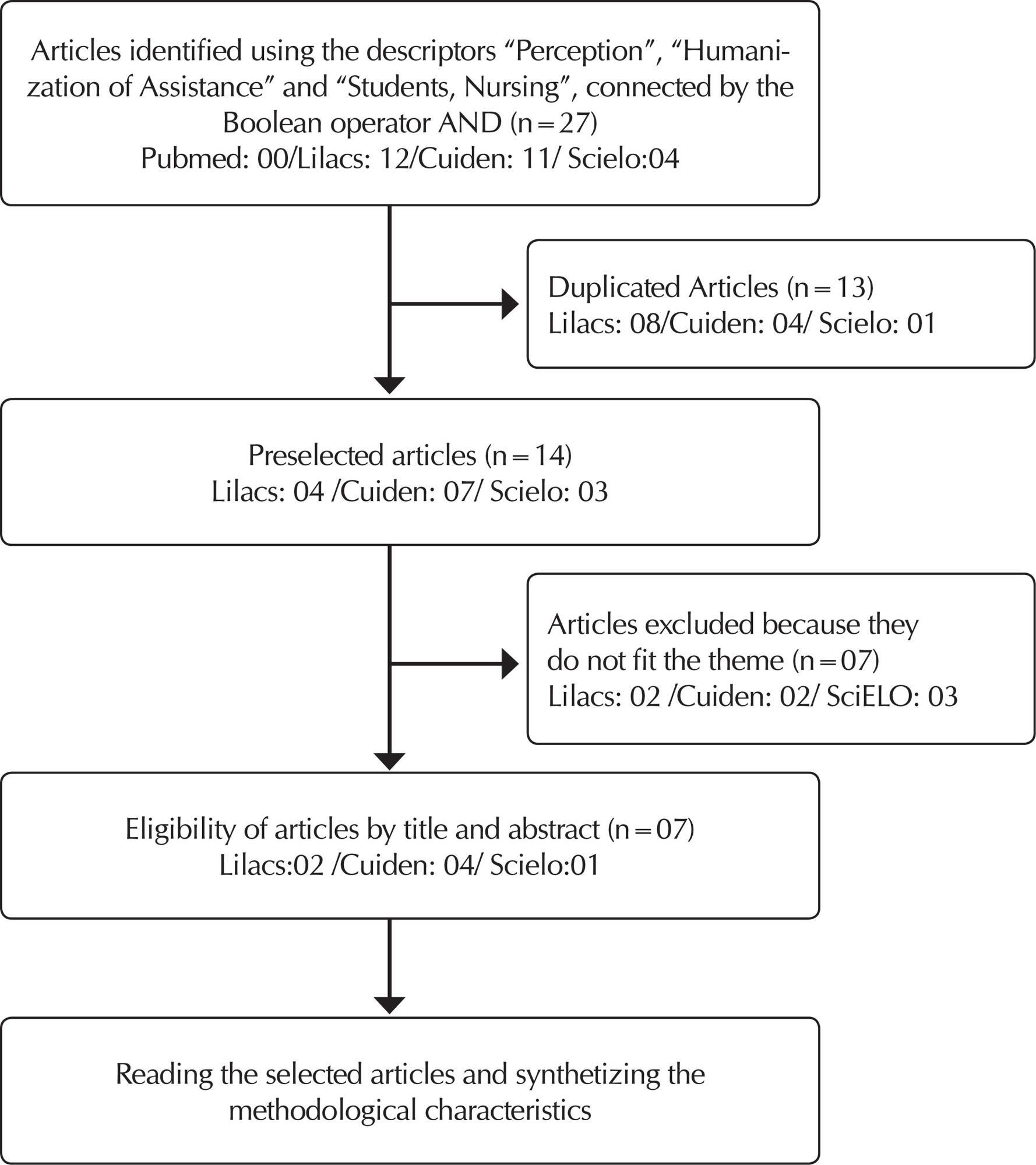
-
RESEARCH01-01-2018
Use of vitamin D and infection in patients with chronic kidney disease
Revista Brasileira de Enfermagem. 2018;71:2792-2799
Abstract
RESEARCHUse of vitamin D and infection in patients with chronic kidney disease
Revista Brasileira de Enfermagem. 2018;71:2792-2799
DOI 10.1590/0034-7167-2018-0640
Views0See moreABSTRACT
Objective:
To evaluate the effectiveness of vitamin D supplementation as protection factor against infection of patients with chronic kidney disease on conservative treatment.
Method:
Retrospective cohort study carried out between 2013 and 2016 in the Conservative Treatment Outpatient Clinics (Ambulatório de Tratamento Conservador) of the Hypertension and Kidney Hospital (Hospital do Rim e Hipertensão) of the Universidade Federal de São Paulo. Data on sociodemographic factors, comorbidity, infection episodes and use or nonuse of vitamin D supplementation for at least 6 months were collected from medical records. The primary outcomes considered in both groups were: presence or absence of infection anywhere on the body (bloodstream, urinary, respiratory and surgical sites).
Results:
A total of 263 patients were included and those who received (n=43) vitamin D had 59% less chance of developing infections (OR=0.41; 95%CI; 0.15-0.99), when compared to those who did not receive.
Conclusion:
Vitamin D supplementation was a protective factor against infections of all causes.
-
RESEARCH01-01-2018
Management challenges for best practices of the Kangaroo Method in the Neonatal ICU
Revista Brasileira de Enfermagem. 2018;71:2783-2791
Abstract
RESEARCHManagement challenges for best practices of the Kangaroo Method in the Neonatal ICU
Revista Brasileira de Enfermagem. 2018;71:2783-2791
DOI 10.1590/0034-7167-2018-0428
Views0See moreABSTRACT
Objective:
To understand the conditions that influence the adherence and application of best practices by nurses in the context of the Nursing care management in the Kangaroo Mother Care in the Neonatal ICU.
Method:
Study of qualitative approach, whose theoretical and methodological frameworks were Symbolic Interactionism and Grounded Theory, respectively. We used the in-depth interview with 8 nurses from the Neonatal ICU of a public maternity hospital in the city of Rio de Janeiro.
Results:
The conditions involved in adhering to the best practices of humanization in the Neonatal ICU are related mainly to human resources, interaction among professionals, work processes and leadership strategies; and care management.
Conclusion:
Professional and institutional challenges have been identified that need to be addressed to improve adherence and implementation of the Kangaroo Mother Care best practices.
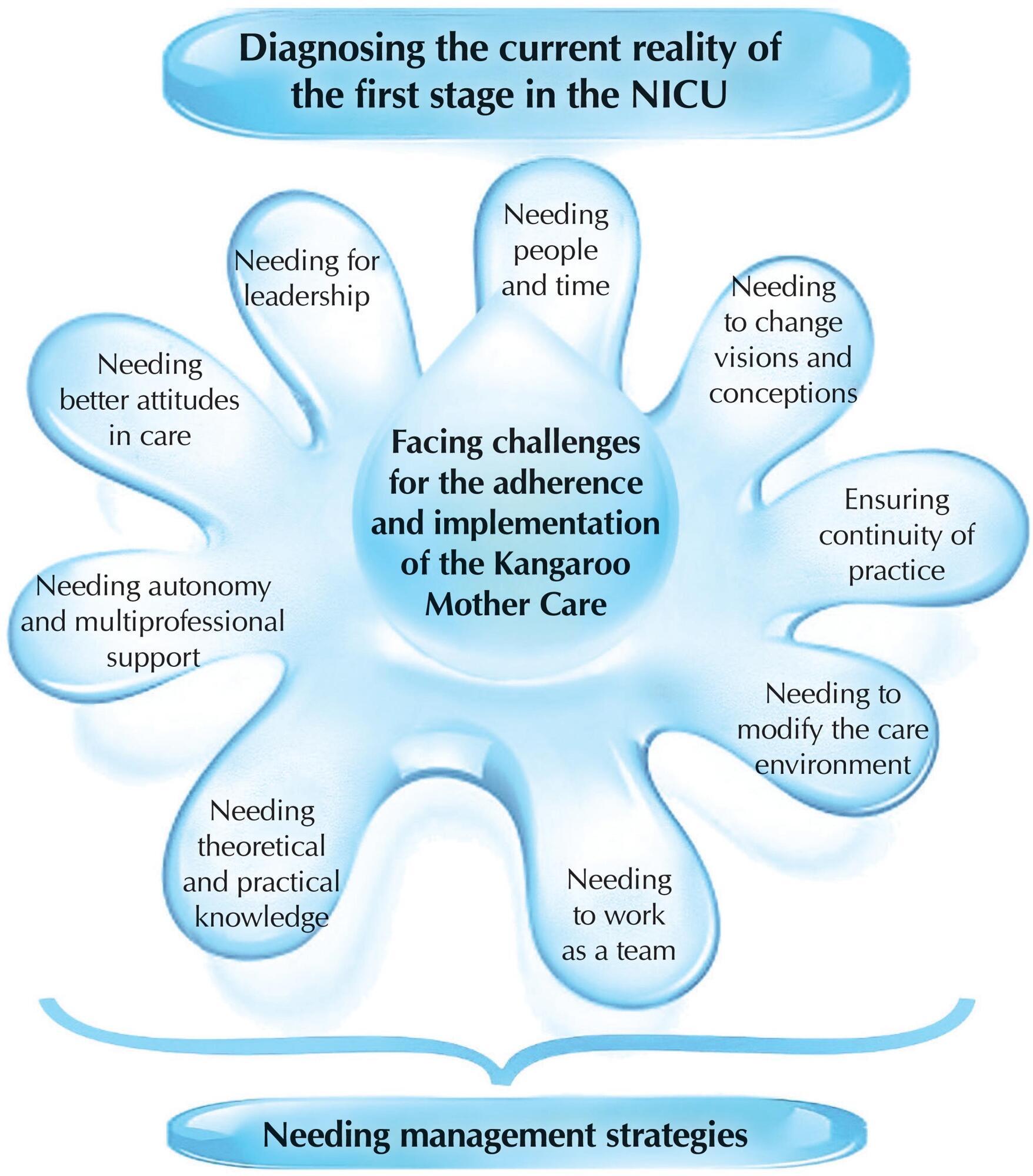
-
RESEARCH01-01-2018
Good practices for patient safety in the operating room: nurses’ recommendations
Revista Brasileira de Enfermagem. 2018;71:2775-2782
Abstract
RESEARCHGood practices for patient safety in the operating room: nurses’ recommendations
Revista Brasileira de Enfermagem. 2018;71:2775-2782
DOI 10.1590/0034-7167-2018-0449
Views0See moreABSTRACT
Objective:
To describe nurses’ recommendations for good patient safety practices in the operating room.
Method:
Quantitative, descriptive and exploratory research developed from an online survey of 220 operating room nurses from different regions of Brazil. The data processing for textual analysis was performed by the software IRAMUTEQ.
Results:
There were eight recommendations: (1) Involvement of the multiprofessional team and the managers of the institution; (2) Establishment of a patient safety culture; (3) Use of the safe surgery checklist; (4) Improvement of interpersonal communication; (5) Expansion of nurses’ performance; (6) Adequate availability of physical, material and human resources; (7) Individual search for professional updating; and (8) Development of continuing education actions.
Conclusion:
These recommendations can be used as care management strategies by nurses for patient safety in the operating room.

-
RESEARCH01-01-2018
The care of nurses in the Family Health Strategy: practices and theoretical foundation
Revista Brasileira de Enfermagem. 2018;71:2767-2774
Abstract
RESEARCHThe care of nurses in the Family Health Strategy: practices and theoretical foundation
Revista Brasileira de Enfermagem. 2018;71:2767-2774
DOI 10.1590/0034-7167-2018-0383
Views0See moreABSTRACT
Objective:
To analyze the practices of nurses working in the Family Health Strategy (FHS) in a city of Rio de Janeiro (RJ) and the theoretical foundations that guide them.
Method:
Qualitative research through semi-structured interviews with twelve nurses working in eleven FHS units between August and December 2014. Data were organized by hermeneutic-dialectical analysis.
Results:
The nurse is inserted in the municipal FHS as care coordinator and political agent; has practices aimed at welcoming, mobilizing social groups, making technical and monitoring of users through health programs. The practices remain in the confrontation of problems and are guided by technical manuals and coordination of health programs.
Final considerations:
Studies are needed to recognize the nurse’s therapeutic objective at the FHS and to propose theoretical foundations, specific to Nursing or Collective Health that will instrumentalize their daily practice.
-
ORIGINAL ARTICLE02-17-2020
Occupational stress in nursing professionals of a university hospital
Revista Brasileira de Enfermagem. 2020;73(2):e20180997
Abstract
ORIGINAL ARTICLEOccupational stress in nursing professionals of a university hospital
Revista Brasileira de Enfermagem. 2020;73(2):e20180997
DOI 10.1590/0034-7167-2018-0997
Views0See moreABSTRACT
Objectives:
To identify the presence of occupational stress in nursing professionals of a university hospital in the inlands of the state of Minas Gerais and examine influence of sociodemographic and occupational characteristics in this disease.
Methods:
Cross-sectional, exploratory and quantitative study with 124 professional nurses from a university hospital in the inlands of the state of Minas Gerais. The adapted and validated Portuguese version of the Job Stress Scale (JSS) was used for the performance of the study.
Results:
Most professionals were women (87.9%) with a mean age of 40.2 years, 80.6% were nursing technicians and 71.8% of the sample had some degree of exposure to occupational stress.
Conclusions:
The occupational stress index was higher than that observed in previous studies. Data obtained in the study point to the need to implement institutional measures for the prevention of occupational stress, especially by strengthening social support at work.
-
REVIEW04-22-2020
Polycyclic aromatic hydrocarbons and development of respiratory and cardiovascular diseases in workers
Revista Brasileira de Enfermagem. 2020;73(3):e20180965
Abstract
REVIEWPolycyclic aromatic hydrocarbons and development of respiratory and cardiovascular diseases in workers
Revista Brasileira de Enfermagem. 2020;73(3):e20180965
DOI 10.1590/0034-7167-2018-0965
Views0See moreABSTRACT
Objectives:
to identify the scientific evidence on the development of cardiovascular and respiratory diseases due to workplace contamination by polycyclic aromatic hydrocarbons.
Methods:
integrative literature review. The search for primary articles was held in October 2017 in the Medical Literature Analysis and Retrieval System Online (through Pubmed), Web of Science and Latin American and Caribbean Literature in Health Sciences (LILACS).
Results:
the 16 studies analyzed showed that exposure to polycyclic aromatic hydrocarbons was associated with cardiovascular diseases, such as increased blood pressure, heart rate variation, and ischemic heart disease; and respiratory disorders, such as decreased lung function, chronic obstructive pulmonary disease, asthma, wheeze, coughing, pulmonary wheezing, chest tightness, effort dyspnea, and sore throat.
Conclusions:
polycyclic aromatic hydrocarbons cause deleterious effects on the cardiovascular and respiratory systems through mutations and cellular inflammation, being a risk to exposed individuals.
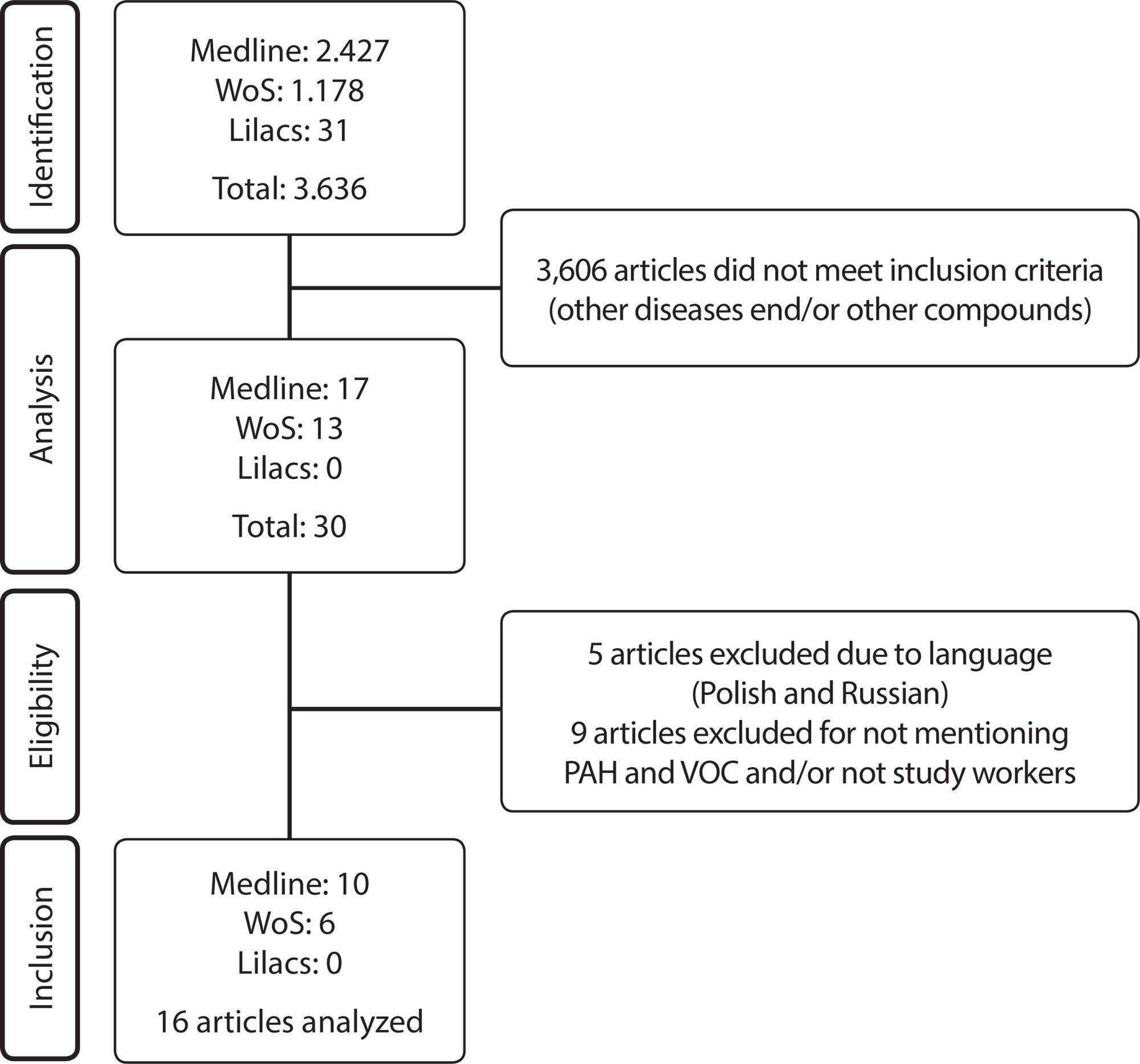
-
ORIGINAL ARTICLE08-19-2019
Mobile application for the teaching of the International Classification for Nursing Practice
Revista Brasileira de Enfermagem. 2019;72(4):1020-1027
Abstract
ORIGINAL ARTICLEMobile application for the teaching of the International Classification for Nursing Practice
Revista Brasileira de Enfermagem. 2019;72(4):1020-1027
DOI 10.1590/0034-7167-2018-0751
Views0See moreABSTRACT
Objective:
Developing a mobile application for the teaching of the International Classification for Nursing Practice.
Methods:
Methodological applied research for technological production, performed in three phases of the contextualized instructional design model: analysis, design and development.
Results:
The application has an initial screen, which provides information about the team and its purpose. Then, four moblets are listed, including presentation, user’s guide consisting of five modules, educational games and five clinical cases. The references on which the application was based are also presented.
Final considerations:
It was possible to develop an application with the potential to promote the knowledge of nursing students and professionals about this classification system.
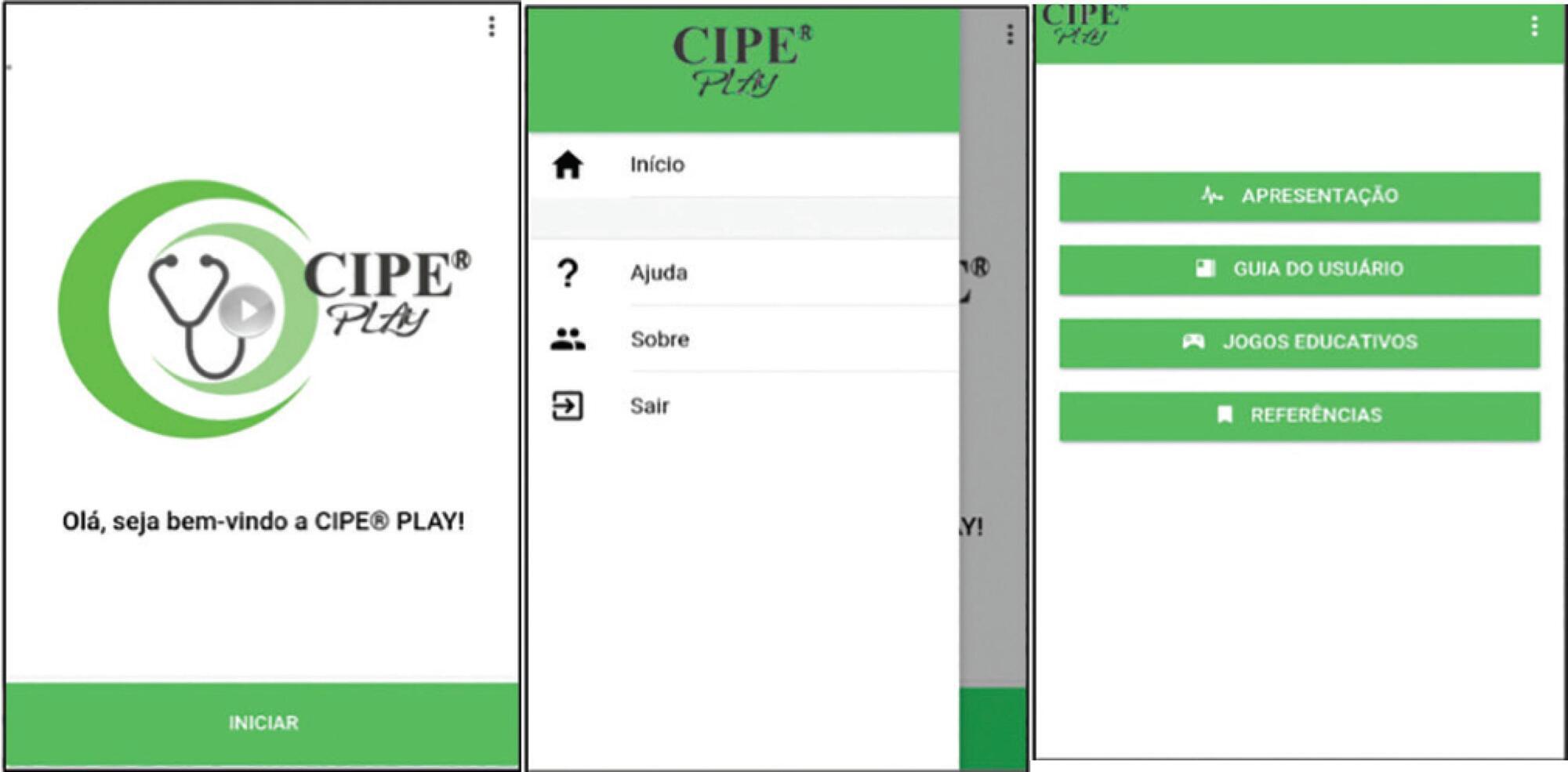
-
REFLECTION06-29-2020
Children’s (in)visibility in social vulnerability and the impact of the novel coronavirus (COVID-19)
Revista Brasileira de Enfermagem. 2020;73:e20200302
Abstract
REFLECTIONChildren’s (in)visibility in social vulnerability and the impact of the novel coronavirus (COVID-19)
Revista Brasileira de Enfermagem. 2020;73:e20200302
DOI 10.1590/0034-7167-2020-0302
Views0See moreABSTRACT
Objective:
To examine the impact of the infection by the novel coronavirus on Brazilian children in situation of social vulnerability based on the Millennium Sustainable Development Goals.
Method:
Reflective study based on discursive formulation in three aspects: principles of the objectives and goals for the millennium sustainable development; impact of the pandemic on the health of children and their families living in social vulnerability; and the role of pediatric nursing in the care provided – limits and challenges.
Results:
In January 2020, the news of COVID 19 is released as a pandemic. In Brazil, children and families are still without access to basic rights, thereby increasing their risks of social vulnerability because of the quarantine. The nursing field has an important role in monitoring children and their families, offering guidance in search for solutions and preventing contamination.
Conclusion:
There are still challenges to be overcome by the children and their families in situations of vulnerability against COVID-19.
-
ORIGINAL ARTICLE12-13-2019
Mobile health technology for gestational care: evaluation of the GestAção’s app
Revista Brasileira de Enfermagem. 2019;72:266-273
Abstract
ORIGINAL ARTICLEMobile health technology for gestational care: evaluation of the GestAção’s app
Revista Brasileira de Enfermagem. 2019;72:266-273
DOI 10.1590/0034-7167-2018-0641
Views0See moreABSTRACT
Objective:
to evaluate the GestAção application, based on the experience of pregnant women use.
Method:
an evaluative, applied, methodological, quantitative-qualitative study. This tool was evaluated by 13 pregnant women through questionnaires for sociodemographic profile characterization and Likert scale use to calculate Content Validity Index (CVI); and semi-structured interview, with analysis based on Semiotics.
Results:
the study evidenced a significant level of satisfaction of pregnant women with the application use, considering the objectives (CVI = 0.92), structure and presentation (CVI = 0.86), and relevance (CVI = 0.92).
Final considerations:
the GestAção application obtained an overall CVI of 0.90, evidencing it as a facilitating and supporting technology in the empowerment of pregnant women interested in obtaining knowledge about pregnancy. It has been proved to be a powerful tool to qualify good practices in nursing consultation.
-
08-19-2019
Degree in Nursing: education through problem-based learning
Revista Brasileira de Enfermagem. 2019;72(4):1071-1077
Abstract
Degree in Nursing: education through problem-based learning
Revista Brasileira de Enfermagem. 2019;72(4):1071-1077
DOI 10.1590/0034-7167-2018-0298
Views0See moreABSTRACT
Objective:
To describe how undergraduate courses in Nursing are using the problem-based learning (PBL).
Method:
Integrative literature review, from searches in the databases Education Resources Information Center (ERIC), Latin American and Caribbean Health Sciences Literature (Lilacs), and PubMed, from 2010 to 2015. 36 articles were analyzed.
Results:
A teaching method used in all continents, the PBL enables improvement of the critical thinking, autonomy, motivation for learning, active search attitude, ability to work in teams, and problem-solving. Difficulties and challenges relate to the training of students and teachers to understand the principles of the method.
Final considerations:
The benefits of PBL coincide with the needs of nursing training, but its applicability demands constant review in seeking to develop the skills necessary for this training.
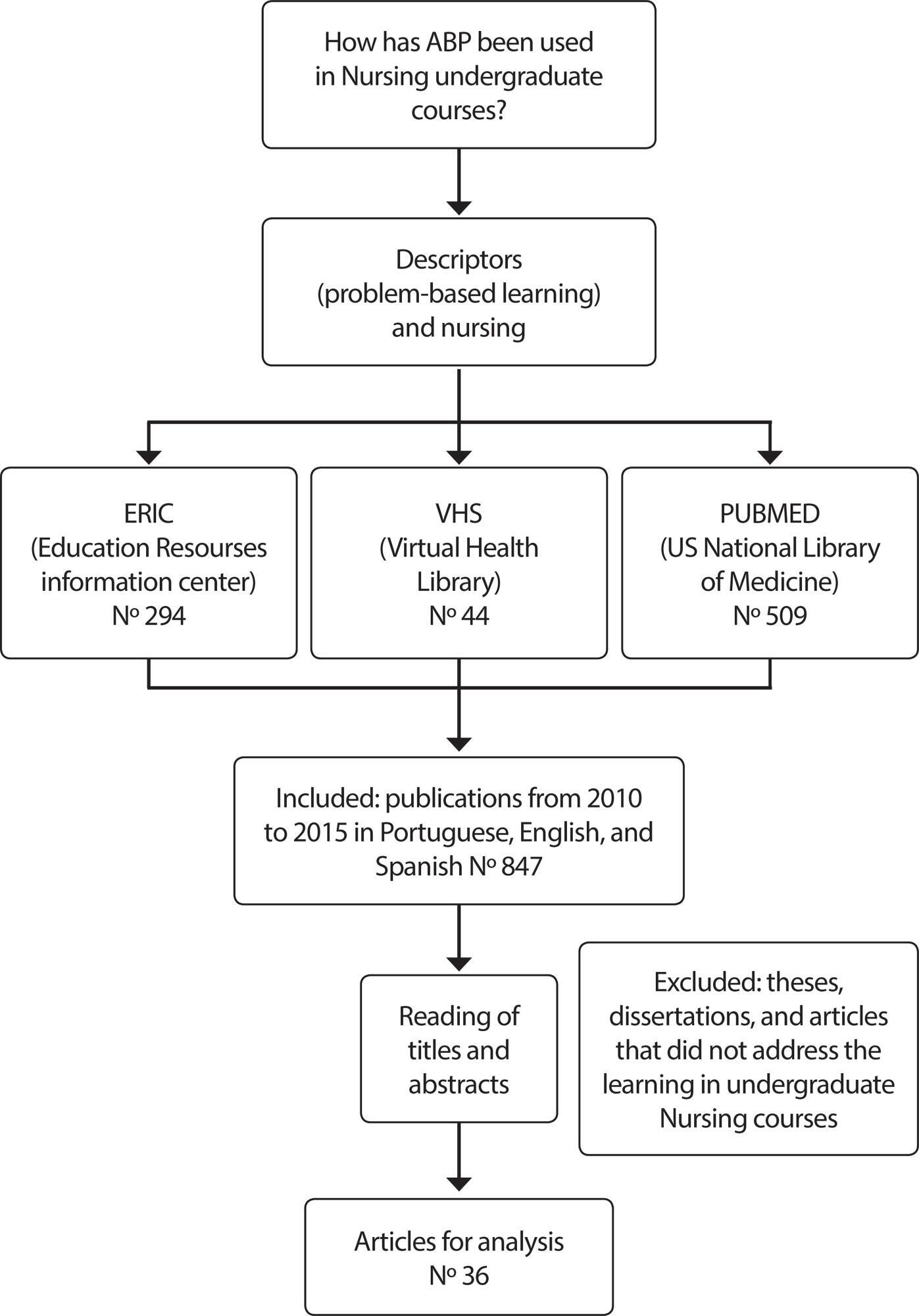
-
ORIGINAL ARTICLE08-14-2020
Education to prevent ventilator-associated pneumonia in intensive care unit
Revista Brasileira de Enfermagem. 2020;73(6):e20190477
Abstract
ORIGINAL ARTICLEEducation to prevent ventilator-associated pneumonia in intensive care unit
Revista Brasileira de Enfermagem. 2020;73(6):e20190477
DOI 10.1590/0034-7167-2019-0477
Views0INTRODUCTIONVentilator-Associated Pneumonia (VAP) is one of the complications related to the care of patients hospitalized in the Intensive Care Unit (ICU), which, according to consulted authors, exceeds the mortality rates of other Healthcare Related Infections (HRI). VAP is the second most frequent infection in patients admitted to the ICU, as well as the most prevalent […]See more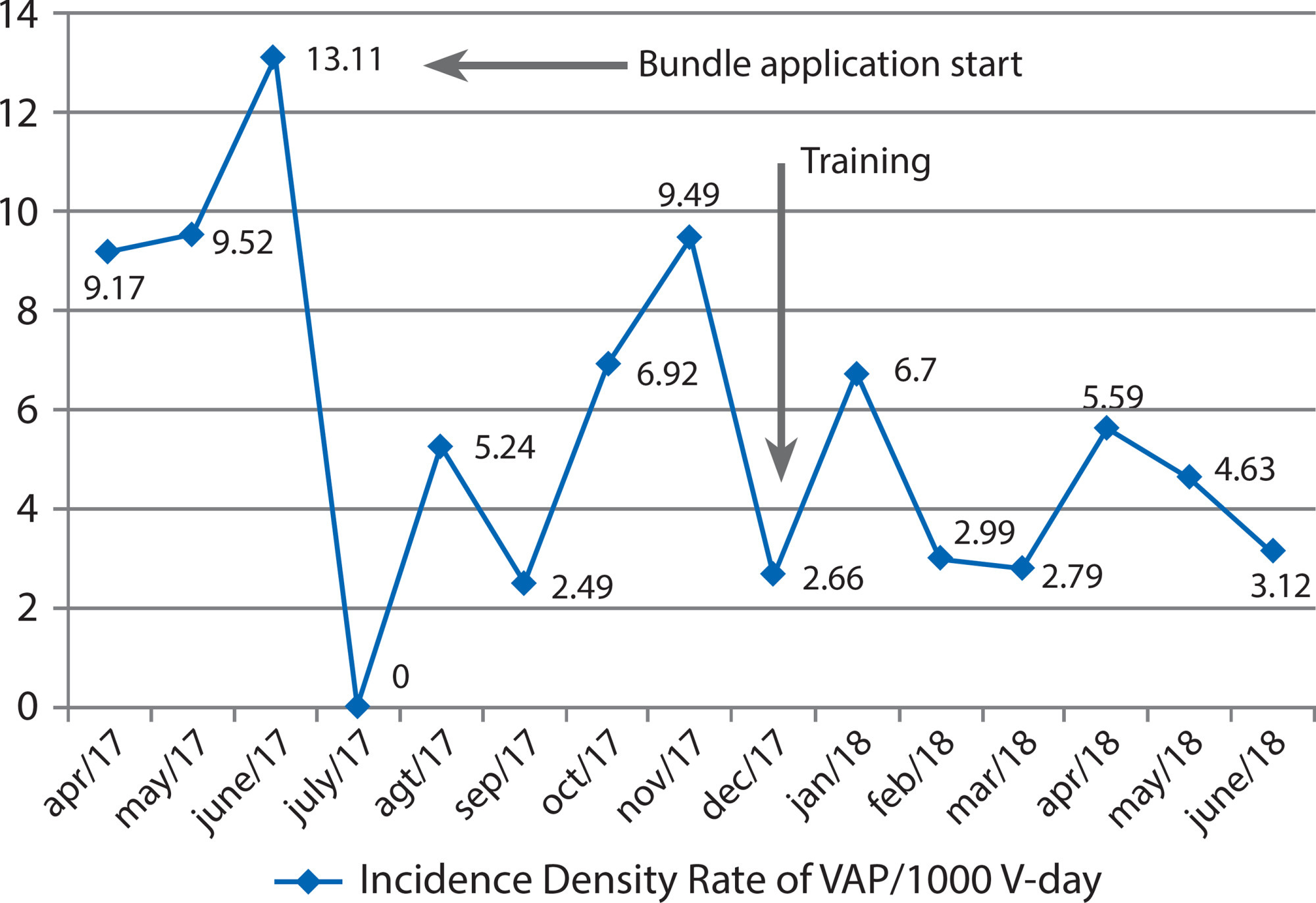
-
ORIGINAL ARTICLE10-23-2020
Building and validating an educational video for elderly individuals about fall risks
Revista Brasileira de Enfermagem. 2020;73:e20200010
Abstract
ORIGINAL ARTICLEBuilding and validating an educational video for elderly individuals about fall risks
Revista Brasileira de Enfermagem. 2020;73:e20200010
DOI 10.1590/0034-7167-2020-0010
Views0See moreABSTRACT
Objective:
to build and validate educational video for elderly individuals about fall risks.
Methods:
methodological study with video building. validated by 22 judges and assessed by 22 elderly individuals. Content was selected from the Fall Prevention Model and items from the Falls Risk Awareness Questionnaire. Items with an agreement greater than 0.80 were considered valid. verified through Content Validation Index (CVI) and binomial test.
Results:
building the video was guided by the Cognitive Theory of Multimedia Learning. Digital animation and audio narration were used. It lasted ten minutes and five seconds and included biological. socioeconomic. behavioral and environmental risks as well as precautions to avoid them. The CVI of judges had an average of 0.99. and of elderly individuals. an average of 1.0.
Conclusion:
the video was built and validated for content and understanding and can be used to prevent falls in elderly individuals.
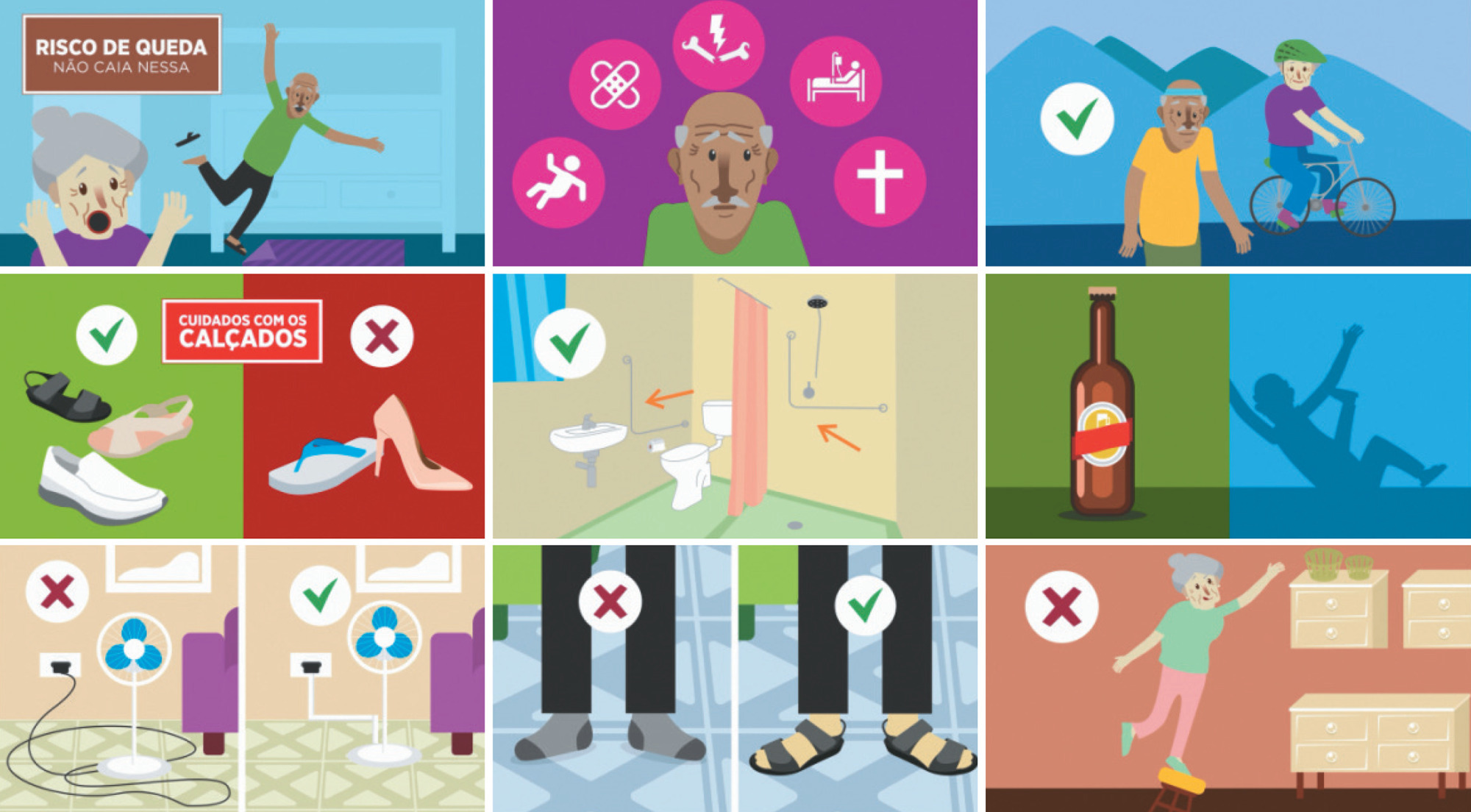
Search
Search in:
Nuvem de Tags
Adolescente (85) Atenção Primária à Saúde (239) COVID-19 (91) Criança (91) Cuidados de Enfermagem (269) Educação em Enfermagem (151) Educação em Saúde (139) Enfermagem (930) Enfermagem Pediátrica (86) Estudantes de Enfermagem (77) Estudos de Validação (131) Família (87) Idoso (208) Promoção da Saúde (99) Qualidade de Vida (104) Saúde do Trabalhador (86) Saúde Mental (145) Saúde Pública (82) Segurança do Paciente (150) Tecnologia Educacional (100)



